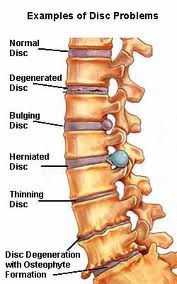What is Spondylosis?
It is no wonder why back problems are so common. As the body ages, intervertebral discs desiccate, or lose water content, and become less elastic. Spinal ligaments begin to tighten, stiffen, and hypertrophy, and joints between the vertebrae begin to degenerate. These are all findings seen in people with spondylosis, a general term for degeneration of the spine. This condition is common, and in the majority of cases, spondylosis is caused by normal wear and tear of the spinal joints and is unavoidable.
Most doctors use the term spondylosis to refer specifically to arthritis of the spine, or spinal osteoarthritis, which can result in painful inflammation resulting from the age-related breakdown of the cartilage cushioning the weight-bearing joints of the spine. This arthritic condition may result in spinal deformities, restricted mobility, and pressure on nerve roots, and possibly on the spinal cord. This can cause neck and/or low back pain, arm and leg pain, paresthesias – that is, a feeling of needles and pins – and muscle weakness. Pressure on the spinal cord from spondylosis can also lead to global weakness, loss of balance, difficulty with coordination, gait dysfunction, and loss of bladder and bowel control.
Why Does Spondylosis Cause Back Pain?
Spondylosis can affect one or more areas of the spine. Lumbar spondylosis affects the lower back, thoracic spondylosis affects the middle region of the spine, and cervical spondylosis affects the neck area. Although spinal deterioration can’t be prevented, a healthy lifestyle may help to delay the progression of degenerative spondylosis. For symptomatic individuals, a variety of spondylosis treatments are available. Physical therapy, exercises, medications, steroid injections, and activity modification are often used to help treat this condition and can provide excellent pain relief. In cases where these measures fail, spinal surgery could prove to be a potential option. In appropriately selected patients, minimally invasive surgery procedures, such as lumbar facet radiofrequency ablation and denervation may provide safe and effective alternative therapies for spondylosis. Less commonly performed procedures for patients with spondylosis include endoscopic procedures and laser spinal surgery and are often reserved for appropriately chosen patients with appropriate conditions and indications. If you are affected by spondylosis or another spinal condition, we recommend that you seek out treatment with board certified physicians who specialize in spinal care, have the proper training, and can offer you the complete range of advanced therapies that are available today. If you would like to learn more about what is available for you, we invite you to contact us and schedule a consultation with one of our board certified physicians. For your convenience, we have offices located in Montclair and Summit New Jersey.







